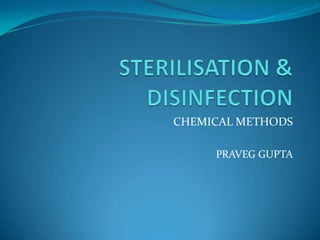This document discusses various chemical methods used for sterilization. It defines key terms like sterilization, disinfection, and antisepsis. It describes ideal properties of chemical disinfectants and their modes of action. Several chemical agents are explained in detail, including their spectrum of activity, concentrations used, limitations, and common applications. Physical methods of sterilization are also briefly mentioned.











































